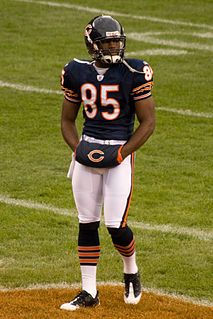
A tabloid is a newspaper with a compact page size smaller than broadsheet. There is no standard size for this newspaper format.

In typography, emphasis is the strengthening of words in a text with a font in a different style from the rest of the text, to highlight them. It is the equivalent of prosodic stress in speech.

The Color Graphics Adapter (CGA), originally also called the Color/Graphics Adapter or IBM Color/Graphics Monitor Adapter, introduced in 1981, was IBM's first graphics card and first color display card for the IBM PC. For this reason, it also became that computer's first color computer display standard.

In computing, text-based user interfaces (TUI), is a retronym describing a type of user interface (UI) common as an early form of human–computer interaction, before the advent of graphical user interfaces (GUIs). Like GUIs, they may use the entire screen area and accept mouse and other inputs. They may also use color and often structure the display using special graphical characters such as ┌ and ╣, referred to in Unicode as the "box drawing" set. The modern context of use is usually a terminal emulator.

The general prohibition sign, also known as a no symbol, no sign, circle-backslash symbol, nay, interdictory circle or universal no, is a red circle with a red diagonal line through it, completely enclosing a pictogram to indicate something is not permitted.
A style sheet is a feature in desktop publishing programs that store and apply formatting to text. Style sheets are a form of separation of presentation and content: it creates a separate abstraction to keep the presentation isolated from the text data.
This article compares Cascading Style Sheets (CSS) support for several browser engines.

GNOME Terminal is a terminal emulator for the GNOME desktop environment written by Havoc Pennington and others. Terminal emulators allow users to access a UNIX shell while remaining on their graphical desktop.

The Sunday comics or Sunday strip is the comic strip section carried in most western newspapers, almost always in color. Many newspaper readers called this section the Sunday funnies, the funny papers or simply the funnies.

Type color, or colour, is an element of typography that describes how dense or heavy the text appears on the page. Finding the correct balance of type color and white space can make text more easily readable. The term type color should not be confused with the usual meaning of color,, instead it has more to do with the blackness or boldness of the text on the page. A bold font creates more contrast on the page, therefore creates more emphasis. Using a bold font is therefore one way that type color can be adjusted.
In the graphical Workplace Shell (WPS) of the OS/2 operating system, a shadow is an object that represents another object.
The Gulf Times newspaper was founded in 1978 as the first publication of the Gulf Publishing and Printing Company in the capital city of Qatar, Doha. It is one of three English language newspapers in the country. It is published by Abdullah bin Hamad Al Attiyah, the former deputy prime minister and the former head of the Emir's court. The current chairman of Gulf Times is Abdullah bin Khalifa al-Attiya, while the editor-in-chief is Faisal Abdulhameed al-Mudahka making the editor in charge K T Chacko.
Comic strip formats vary widely from publication to publication, so that the same newspaper comic strip may appear in a half-dozen different formats with different numbers of panels, different sizes of panels and different arrangement of panels.

This a list with brief descriptions of Topps trading card products for 1983. All sets listed are standard size unless noted.

The Chicago Bears of the National Football League sport a wishbone 'C' logo, which the team has used since the 1960s.

The Sportvereinigung Dynamo was the sport association of the security agencies of former East Germany. The association was founded on 27 March 1953 and was headquartered in Hohenschönhausen in East Berlin. From the date of its inception until 23 November 1989 the president of the SV Dynamo was Erich Mielke, the Minister of State Security.

The Kansas State Collegian is the official daily student-run newspaper of Kansas State University. Founded in 1896, the Collegian has a circulation of 4,750. It is owned and published by Collegian Media Group.

VGA text mode was introduced in 1987 by IBM as part of the VGA standard for its IBM PS/2 computers. Its use on IBM PC compatibles was widespread through the 1990s and persists today for some applications on modern computers. The main features of VGA text mode are colored characters and their background, blinking, various shapes of the cursor, and loadable fonts. The Linux console traditionally uses hardware VGA text modes, and the Win32 console environment has an ability to switch the screen to text mode for some text window sizes.
A scene description language is any description language used to describe a scene to a 3D renderer, such as a ray tracer. The scene is written in a text editor, as opposed to being modeled in a graphical way, but a 3D modelling program may allow for a scene to be exported to a specified scene description language.

Text-based semigraphics or pseudographics is a primitive method used in early text mode video hardware to emulate raster graphics without having to implement the logic for such a display mode.













